Everything you want and need to know about the giant toad, on Aruba called Sapo and the Dori.
On Aruba you can encounter various frogs and toads. One of a toad species is the giant toad which is also called Sapo, translated from Spanish Sapo means "toad" and the Aruban frog or red-billed frog witch is also called a Dori.
This Sapo often appears on rainy days and can be dangerous for your pet. In defense, it secretes a poisonous substance from glands.
These are visible as large 'bumps' behind the eyes that extend to the shoulder from where the poison can be shot. If your dog has ingested enough poison, your dog may develop symptoms of poisoning. This gift can be ingested in various ways, for example by taking the Sapo in the mouth or drinking the water that has had a Sapo in it for some time.
First of all, any contact of your pet with a toad could but shouldn't be deadly...if you act quickly:
What to do if your animal has come into contact with a toad.
First things first, the Sapo's milky poison is extremely sticky! So, when you start rinsing the mouth and or anywhere the Sapo may have squirt her milk on the animal's fur, consider doing so thoroughly and for at least 5 minutes or more. If you do this quick and effective, you will probably not need a trip to the Vet. Meanwhile, in all case, have someone else call the Vet in case you have questions or needs to be guided through the emergency.
All Vets on Aruba are on call 24/7 and some only offer this service to their clients but it's always good to have all emergency number handy and WRITTEN somewhere, like on the fridge or anywhere else whee is the best for you to see it.
When is the trip to a Vet really necessary?
If your dog stops foaming after that thorough mouth rinse and is acting more relaxed, a trip to the Vet is no longer necessary.
Tip: Always have Activated Charcoal (NORIT) handy. Give a tablet or two and it should ensure that anything your pet may have swallowed will not affect it.
If after a thorough rinse your pet is still foaming, trembling, acting nervous, paranoid, incomprehensive, has dilated pupils or can't walk and keeps losing balance, call the Vet immediately and rush it there. That means the poison has affected the pet to a point you can no longer reverse it and will take a few injections and/or flush in order to try to save the animal.
NOTE: There will be NO time to ask Dokter Facebook or Docter Google. EVERY MINUTE COUNTS!
Symptoms of poisoning
- Foaming at the mouth,
- Drooling,
- Being unable to stand on one's feet,
- Having seizures.
Below you will find photo's and more general information about the Sapo. We would like to share more information about the Dori at the end of the page.
The Giant toad, In Aruba called Sapo
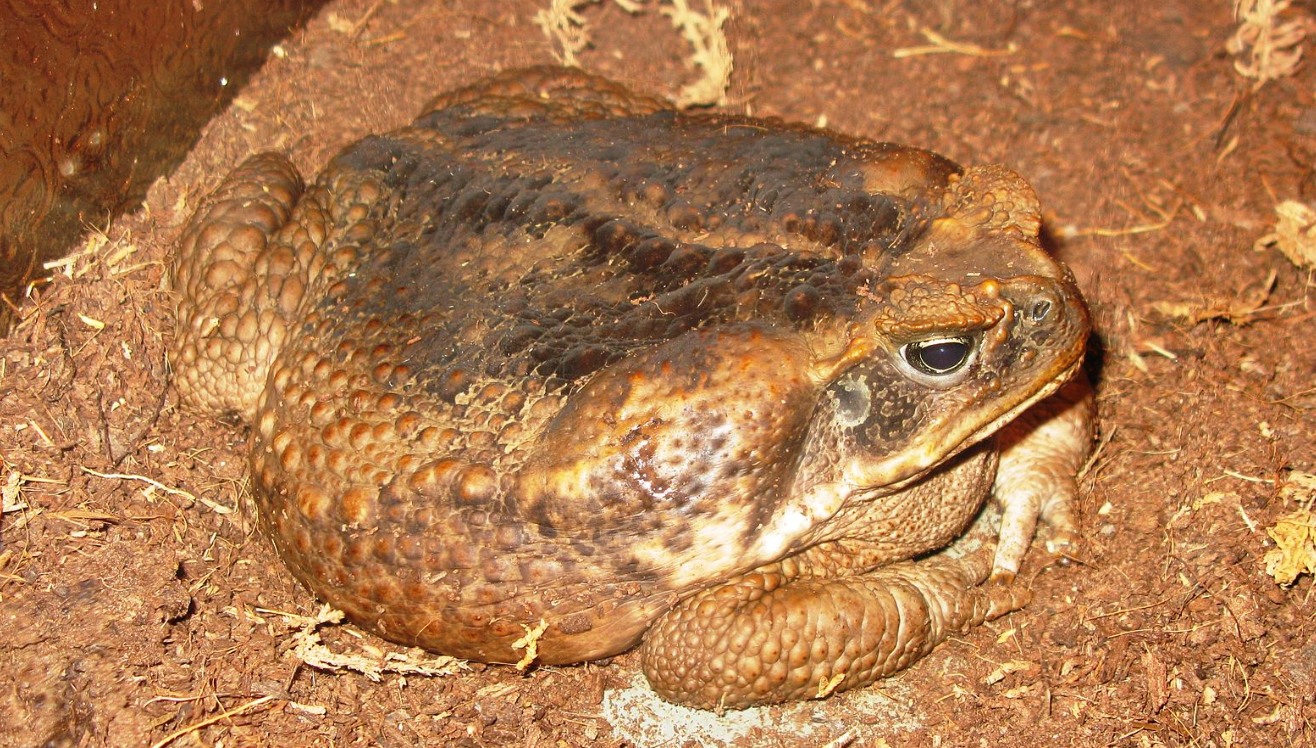
Fat ones have an almost round body shape.
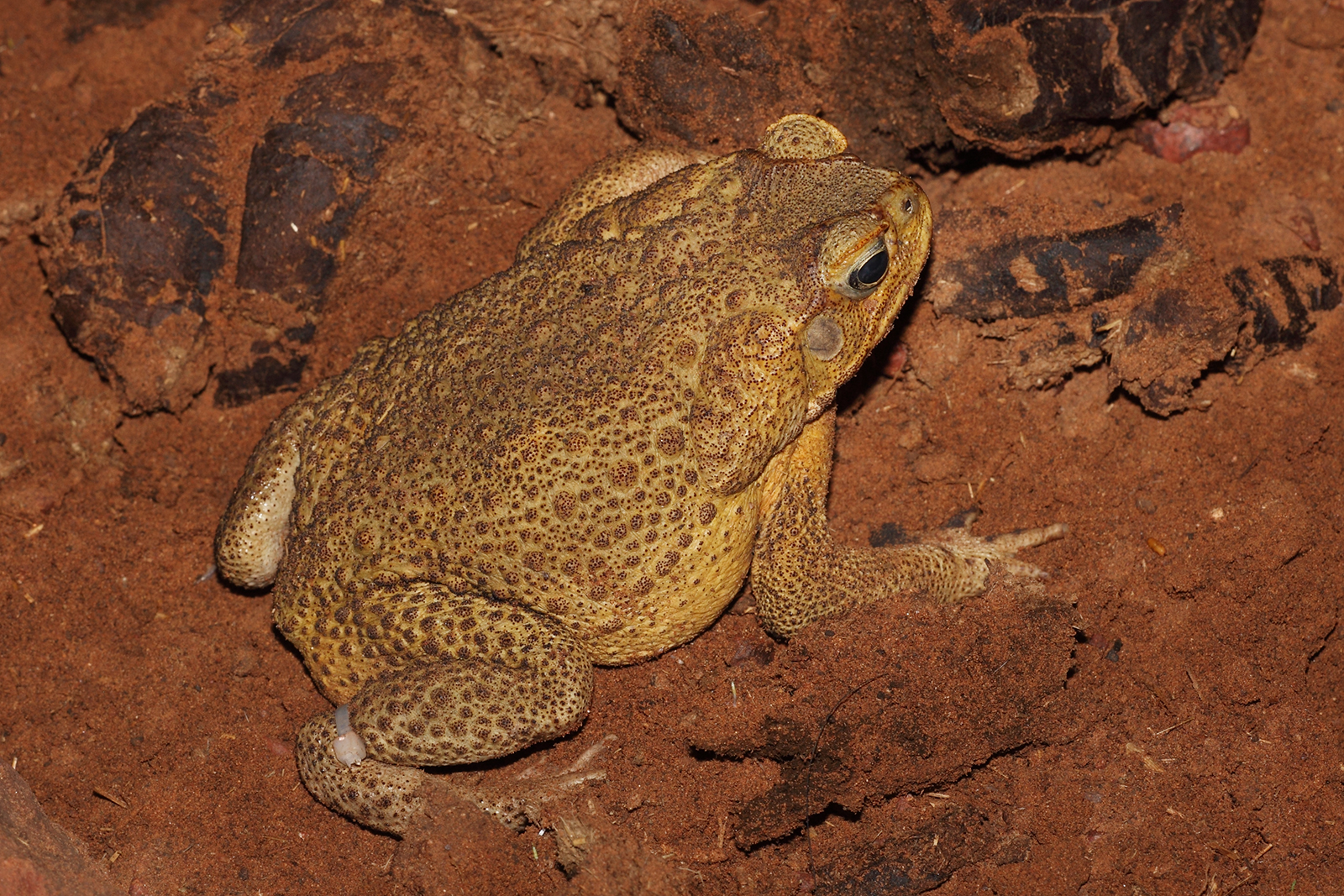
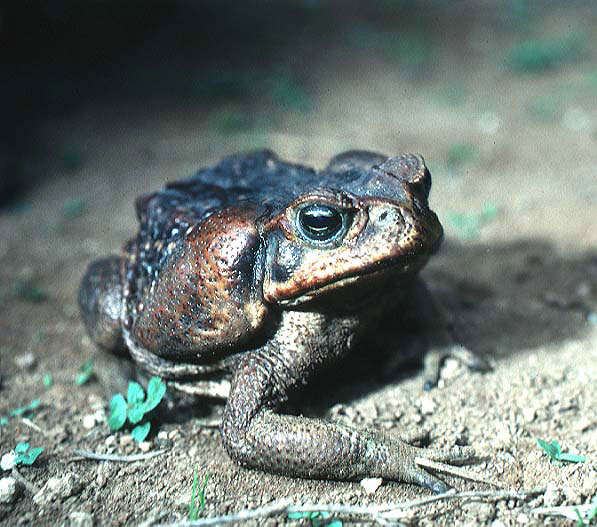
Front view with ossified margins and ear glands (left)
Scientific name: Bufo Marinus (Toad of the sea) and later the name has changed to Rhinella marina
Common name: Giant toad, Agapad, Sapo.
Appearance: This heavily built toad has ridges on its head and has rough, warty skin. The head is flattened and broad and clearly distinguishable from the rest of the body. The ear gland of the animals is quite large and clearly visible. This is located a short distance from the eyes.
Habitat: Native to large parts of Central and South America, it has been introduced by humans to several other places, such as the Caribbean.
The Sapo was released to control insects and mice, but instead of eating these pests, the Sapo turned to other animals, such as other amphibians that also eat insects. In addition, the Sapo is very poisonous and enemies in areas where it does not naturally occur can die if they try to eat the Sapo. As a result, the Sapo itself is now seen as a pest. The Sapo has even become a symbol for animal species that have caused an ecological disaster when they end up in areas where they do not really belong.
Sex distinction: Often sexually mature females are larger than the males. Sexually mature males have a different colored vocal sac or disc under the chin. This becomes visible when it is inflated. Only males make a mating sound. Females can make noise, but they do this as a defense. Males often have mating pads on their fingers.
Size: These Sapo is one of the larges toads of the world and can reach a maximum length of 20 to 25 centimeters. (8 to 10 inch)
Behaviour: The giant toad is a cannibal. Smaller toads of another species of toad are also considered food. In the cooler winter period they hibernate. This is in preparation for reproduction. The toad is poisonous to other species, and it eats anything that moves.
Reproduction: The males attract the females by croaking. When the female is interested, the male takes her in a headlock, which is called amplexus. The female is held behind the front legs, often just in front of the hind legs. This stimulates egg production in the female. One clutch consists of an average of 30,000 eggs. The giant toad has no brood care and will eat the offspring.
Handling:The toads have a fragile skin and can therefore not be handled (or as little as possible). The toad threatens to turn its back to the front. When the threat is apprehended, the toad urinates. It can also secrete Bufotoxin (whereby the poison can sometimes be spewed up to a meter away). The poison of this toad is very dangerous. To move the animal, you can let the toad walk into a container without touching it. Use a bucket or a plastic bag to reove it from you property and let it out somewhere else so they can do their work as they suppose to do to begin with. Or you can poor PineOil on them and let it do the work. It will only take a few minutes. Salt will only burn their skin and not necessarily kill them.
The Pleurodema brachyops in Aruba called Dori
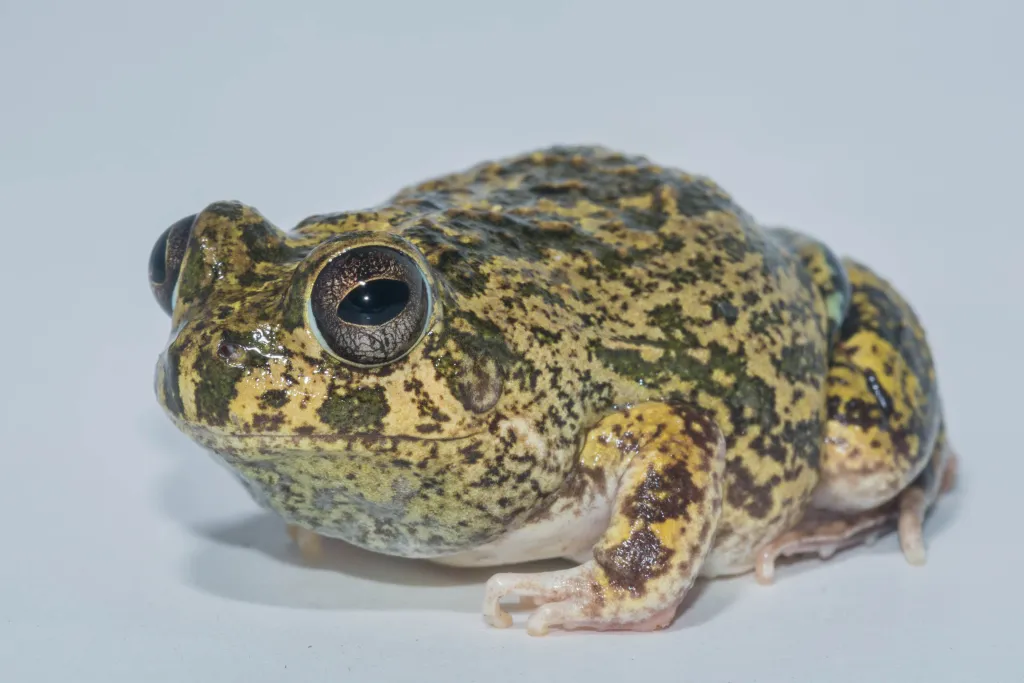
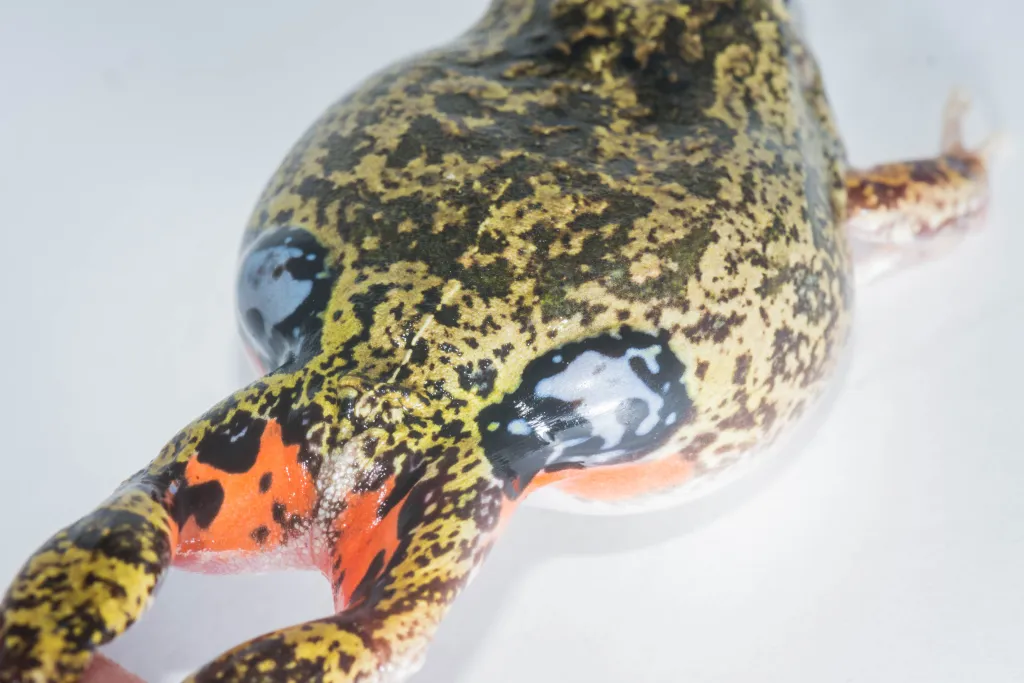
dori stretched out with clearly visible the red spots and double eyes
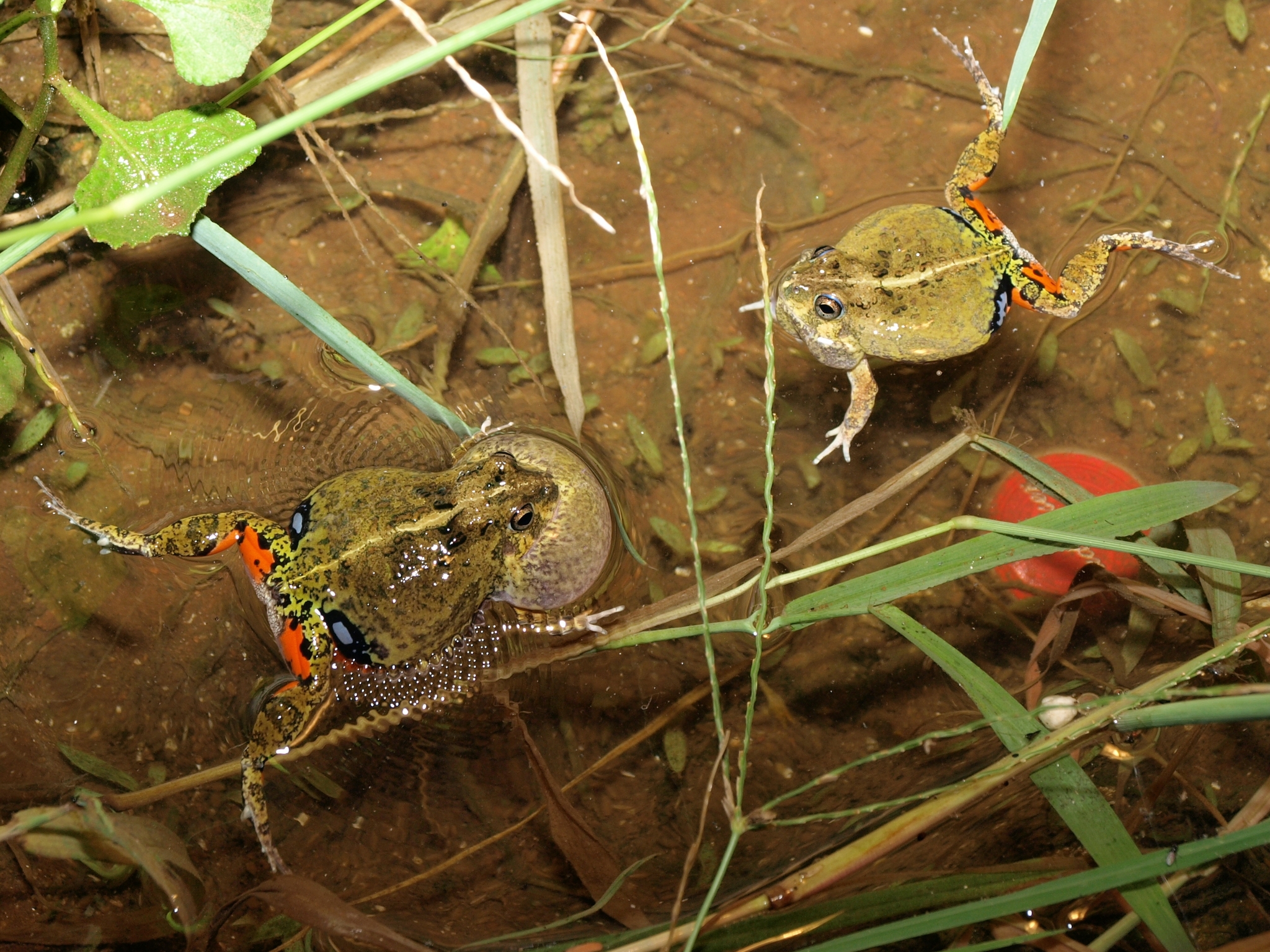
Scientific name: Pleurodema brachyops
Common name: Four-eyed Frog, Aruban frog, Red-billed frog or Dori
Size: The Dori is approximately 5 to 6 cm / 2 inch.
Appearance: The Dori gets its name from the two, (blue, black and/or red) poison glands on their butt that resemble eyes.
When threatened, the Dori will raise its butt into the air to try to confuse the predator into thinking its their head. The dori has red spots on the hind legs.
During the dry season, the Dori will burrow down in the soil to protect themselves from dehydration. The breeding season for the Dori is during the rainy season. The males will call from temporary ponds created by the rain or from small permanent ponds. The couple will create a foam nest to protect the eggs.
The dori is on the list of Protected Animal Species in Aruba and is considered an endangered species
